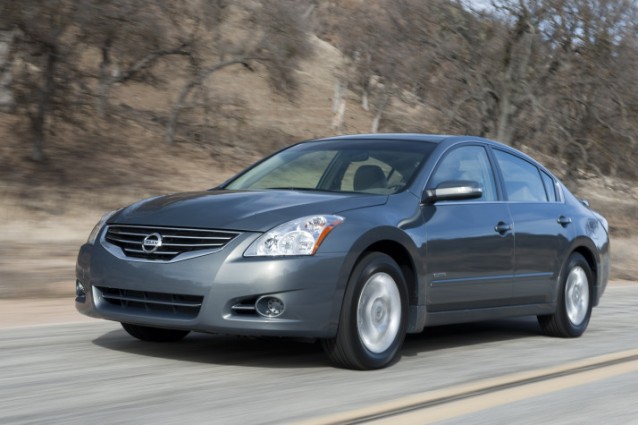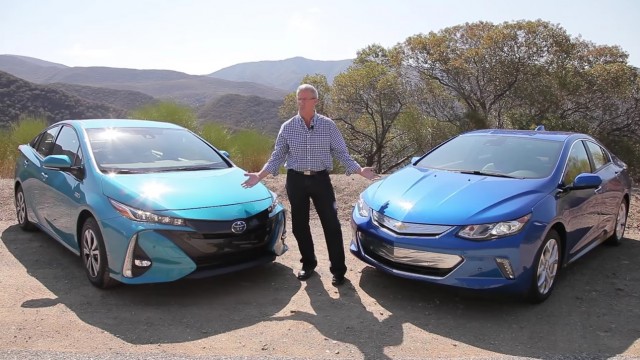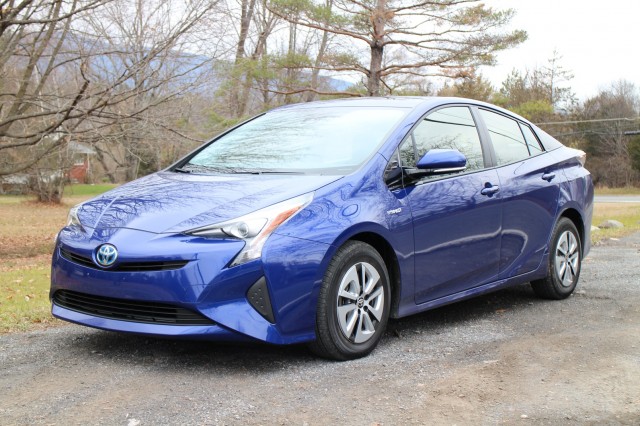Over the past six months, Toyota has made some remarkable decisions about its present and future car technologies.
After years of staunch opposition to battery-electric vehicles, it committed to launching one by 2020.
Now, the company has decided to offer its proprietary hybrid technology in volume to other automakers.
That decision, announced two weeks ago as part of a wider announcement of powertrain strategies by the company, marks a clear change of course.
Since 1997, when the company launched the first Prius hybrid model in Japan, it has fiercely guarded its hybrid-electric technology.
It has signed a few licensing deals, among them to Nissan for the 2007-2011 Altima Hybrid sold in the U.S. and to Mazda for a hybrid Mazda 3 compact sold only in Japan.

2011 Nissan Altima Hybrid
But those deals were limited and fairly low-volume.
Now, as described last week in an article by Reuters, Toyota plans to work with its suppliers at a much earlier stage to standardize components, making it easier for future generations of its hybrid technology to be used by other automakers.
Selling its signature hybrid system to other makers will not only give Toyota greater economies of scale, but likely prolong the life of that technology.
Toyota launched its fourth generation of the Prius last year, and while the car is considerably better to drive and more fuel-efficient than past versions, its sales in the U.S.—a major market—have lagged.
That is likely due to a combination of several factors, including continued cheap gasoline, the ongoing shift in buyer preferences from passenger cars to utility vehicles of all sizes, and perhaps the extreme styling of the latest Prius.
The company also made an unexpected choice in the 2017 Prius Prime, its latest plug-in hybrid Prius: it defaults the car to run solely in electric mode if the battery has charge remaining, unlike most other plug-in hybrids except the Chevy Volt.

2017 Toyota Prius Prime and 2017 Chevrolet Volt with Green Car Reports editor John Voelcker
That may indicate an increasing understanding of the benefits of all-electric propulsion by the company whose green-car technologies previously stretched from hybrids and plug-in hybrids to hydrogen fuel-cell vehicles, while jumping over battery-electric cars.
The hybrid-sharing strategy is a long-term one, and will involve changes to parts specifications and technical standards that will be largely invisible to buyers.
"Toyota suppliers produce a lot of technology which can only be used by Toyota," the president of the company's powertrain unit, Toshiyuki Mizushima, said to reporters, as quoted by Reuters.
"We want to change that to a system where we develop technology with our suppliers at an earlier stage," so that non-Toyota customers can have buy those components and systems directly from suppliers.
But whether the hybrid technology it hopes to sell to other makers carries the company's name or not—"Toyota Inside," anyone?—it will lower the cost for all users.
It may also reflect a realization that almost 20 years after launching hybrids, Toyota is the sole global automakers dedicated to propagating the technology across all its product lines.

2001 Toyota Prius Sedan
As much simpler battery-electric vehicles slowly gain market momentum, they are likely to surpass the continuing low penetration of hybrids in the overall global market.
Which suggests that, just possibly, Toyota's two-decade bet on hybrid technology to offset its continuing sales of otherwise not notably fuel-efficient cars and trucks may not be paying off as it anticipated.
Either way, expect to see more hybrids with Toyota technology inside even as that company scrambles to catch up with General Motors, Tesla, and other unlikely competitors in electric cars it didn't envision back in 1997.




No comments:
Post a Comment